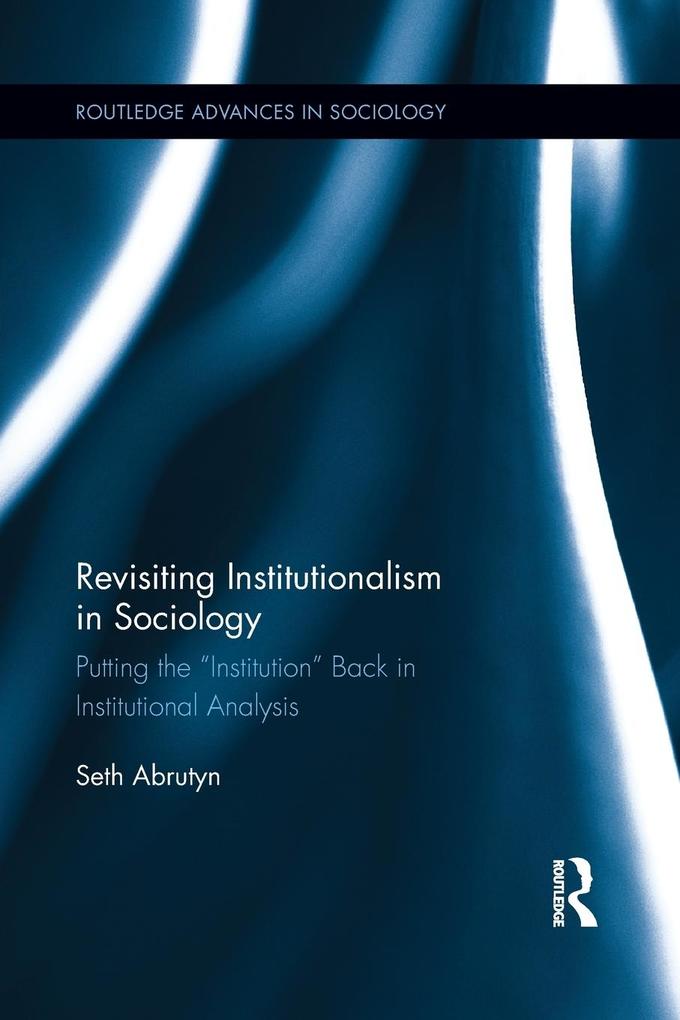
Zustellung: Mo, 05.05. - Do, 08.05.
Versand in 6 Tagen
VersandkostenfreiBestellen & in Filiale abholen:
There may not be a concept so central to sociology, yet so vaguely defined in its contemporary usages, than institution. In Revisiting Institutionalism in Sociology, Abrutyn takes an in-depth look at what institutions are by returning to some of the insights of classical theorists like Max Weber and Herbert Spencer, the functionalisms of Talcott Parsons and S. N. Eisenstadt, and the more recent evolutionary institutionalisms of Gerhard Lenski and Jonathan Turner. Returning to the idea that various levels of social reality shape societies, Abrutyn argues that institutions are macro-level structural and cultural spheres of action, exchange, and communication. They have emergent properties and dynamics that are not reducible to other levels of social reality. Rather than fall back on old functionalist solutions, Abrutyn offers an original and synthetic theory of institutions like religion or economy; the process by which they become autonomous, or distinct cultural spaces that shape the color and texture of action, exchange, and communication embedded within them; and how they gain or lose autonomy by theorizing about institutional entrepreneurship. Finally, Abrutyn lays bare the inner workings of institutions, including their ecology, the way structure and culture shape lower-levels of social reality, and how they develop unique patterns of stratification and inequality founded on their ecology, structure, and culture. Ultimately, Abrutyn offers a refreshing take on macrosociology that brings functionalist, conflict, and cultural sociologies together, while painting a new picture of how the seemingly invisible macro-world influences the choices humans make and the goals we set.
Inhaltsverzeichnis
Introduction 1. Institutional Autonomy 2. Building Autonomous Institutions from The "Inside-Out" 3. The Ecological Dynamics of Institutions 4. The Invisible Framework: Intra-Institutional Structure 5. The Roots of Intra-Institutional Culture: The Circulation of Generalized Symbolic Media 6. Intra-Institutional Stratification: The Uneven Distribution of Media and Other Resources 7. Considering the Consequences of a New Theory of Institutions
Produktdetails
Erscheinungsdatum
07. Dezember 2015
Sprache
englisch
Seitenanzahl
244
Autor/Autorin
Seth Abrutyn
Verlag/Hersteller
Produktart
kartoniert
Gewicht
360 g
Größe (L/B/H)
229/152/13 mm
ISBN
9781138639676
Entdecken Sie mehr
Bewertungen
0 Bewertungen
Es wurden noch keine Bewertungen abgegeben. Schreiben Sie die erste Bewertung zu "Revisiting Institutionalism in Sociology" und helfen Sie damit anderen bei der Kaufentscheidung.









